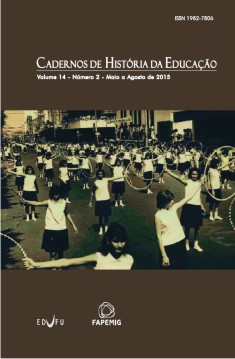THE CHANGING OF THE POWER STRUCTURE IN THE EDUCATION OF APPRENTICE IN THE SECOND HALF OF THE 19TH CENTURY
Contenido principal del artículo
Resumen
The education of apprentices changed radically thanks to industrial revolution and the new mentality during the 18-19th centuries. The emergent power structure transformed the relations of individuals, family and state. The forceful change arose in Hungary in the second half of the 19th century. The Industry Act of 1872 disconnected the last stone of the old order with the abolition of guilds. The laws were codified one by one which ensured the literacy of citizens, the liberty of the industry and prosperity of the country. Institutionalization of the education of apprentices entailed extension of specific disciplinarian actions of school to the apprenticeship of the prospective craftsmen. The extended school age, that was the huge result of the period, eventuated the extension of the childhood, moreover the childhood of the apprentices. The special status of apprentices is particularly suited for illuminating the cultural-historical alteration of notion of childhood, adolescence, and discipline.
Descargas
Los datos de descargas todavía no están disponibles.
Detalles del artículo
Cómo citar
Vörös, K. (2015). THE CHANGING OF THE POWER STRUCTURE IN THE EDUCATION OF APPRENTICE IN THE SECOND HALF OF THE 19TH CENTURY. Cadernos De História Da Educação, 14(2). https://doi.org/10.14393/che-v14n2-2015-13
Número
Sección
Artículos

Esta obra está bajo una licencia internacional Creative Commons Atribución-NoComercial-SinDerivadas 4.0.
Os trabalhos publicados são de propriedade dos seus autores, que poderão dispor deles para posteriores publicações, sempre fazendo constar a edição original (título original, Cadernos de História da Educação, volume, nº, páginas).
